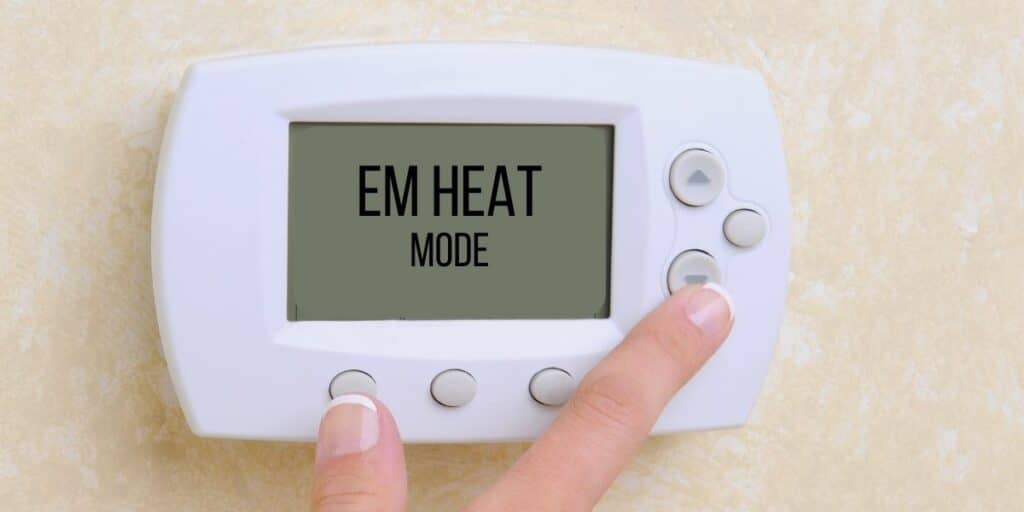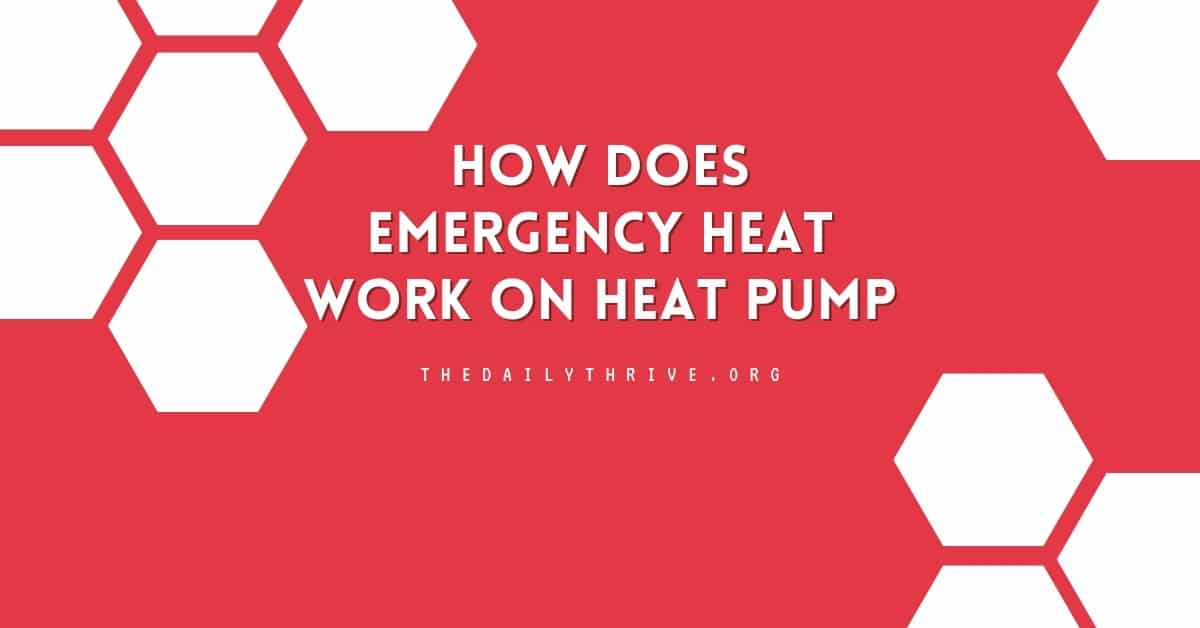In the world of home heating systems, particularly in colder climates, understanding the functionality and management of heat pumps is crucial. Heat pumps are popular due to their efficiency and versatility, but they can encounter challenges when temperatures plummet. This comprehensive guide will delve into emergency heat (EM heat) on heat pumps – a feature many homeowners often misunderstand.
We will explore how emergency heat works on a heat pump, its impact on your energy consumption, and the appropriate situations for its use. This article aims to provide clarity and guidance for optimal heat pump operation, ensuring comfort and cost-effectiveness in your home by unpacking the distinctions between standard and emergency heating modes.
Heat Pumps and Emergency Heat: A Fundamental Overview
Heat pumps, known for their efficiency over traditional furnaces, don’t produce heat. Instead, they transfer heat from outside to inside, using a refrigeration system similar to air conditioners.
They draw about 3,000 watts of power, much less than the 10,000 or more needed for an electric furnace. This efficiency is why the federal government offers subsidies for new heat pump installations.
However, heat pump performance can decline in cold weather as they struggle to extract warmth from the cold air.
To counter this, many heat pumps in colder regions have auxiliary heaters. These resistive heating elements automatically activate when indoor temperatures drop below the thermostat setting.
Auxiliary Heat vs. Emergency Heat: What the Difference?
Many homeowners may not realize when the auxiliary heat kicks in until they see a spike in their electricity bill. This is because resistive heat consumes more electricity than the heat pump’s compressor.
But there’s another backup function, often unnoticed, known as emergency heat (EM heat). This feature is critical when the heat pump stops functioning, or the coils freeze over, a common occurrence in frigid weather.
This table briefly outlines the key differences between Auxiliary and Emergency Heat, helping you understand their functions, operation modes, energy implications, and ideal use cases.
| Auxiliary Heat | Emergency Heat | |
|---|---|---|
| Function | Automatically activates to supplement the heat pump in cold weather. | Manually activated when the heat pump fails or cannot function effectively. |
| Operation | Works in tandem with the heat pump, providing additional heat as needed. | Shuts down the heat pump and activates a secondary heating source. |
| Energy Usage | Higher than normal heat pump usage but less than emergency heat. | Typically the highest energy usage due to direct heating method. |
| Ideal Use Case | Used during moderately cold weather or when heat pump efficiency is reduced. | Utilized in extreme situations such as heat pump malfunction or severe cold. |
How Emergency Heat Operates in Heat Pumps
The emergency heat setting in heat pumps is a critical feature designed to provide heating when regular heat pump functions are compromised. When activated, this setting brings about a fundamental change in how the heating system operates. It effectively shuts down the compressor, the heart of the heat pump’s standard operation. This means the usual process of transferring heat from the outside air is temporarily halted.
Instead of relying on the heat pump’s standard mechanism, the system switches to its backup heating source. This backup can vary depending on the heat pump’s design and the home’s heating infrastructure. The backup is often an electric heat strip, but it can also be a natural gas or oil furnace.
These alternatives are designed to provide heat more directly and are typically more robust in extreme cold conditions.
Upon selecting the emergency heat mode via the thermostat, the system bypasses the normal operations of the heat pump. This direct engagement of the backup heating source means that the system no longer transfers heat from outside but generates heat more conventionally.
In systems where the backup is electric, the air handler – which typically works to distribute the heat extracted from outside – transforms into an electric furnace. This change effectively makes the air handler a direct source of heat rather than a medium for transferring external heat indoors.
This shift to emergency heat is particularly important when the heat pump cannot function effectively due to extreme cold or has suffered a mechanical failure.
In such cases, the emergency heat ensures the home remains warm, even when the primary heat pump system isn’t operational. However, it’s crucial to remember that this heating mode is typically less energy-efficient than the standard heat pump operation, leading to higher energy usage and costs.
Therefore, it’s recommended to use emergency heat only when necessary and for as short a time as possible.
Emergency Heat on Your Thermostat: What Does It Mean?
The emergency heat setting on your thermostat is your secondary heating source for extreme cold conditions. When your heat pump can’t pull enough warmth from the outdoor air, emergency heat takes over to maintain your desired indoor temperature.

The “em heat” setting indicates that your system has shifted to this mode, which continues until it is manually deactivated.
When to Use Heat Pump Emergency Heat?
Emergency heat should be reserved when the heat pump malfunctions or experiences icing.
For example, if a branch damages your heat pump during a snowstorm, switch to emergency heat while awaiting repairs. However, avoid using this mode for extended periods, as it can strain your heating system and significantly increase your electricity bill.
Cost Implications of Using Emergency Heat
Using emergency heat will keep you warm, but at a higher cost.
This mode uses considerably more energy, leading to a substantial rise in your electricity expenses. A cost breakdown reveals that emergency heat can significantly increase your electric bill compared to normal heat pump usage.
For instance, using a normal heat pump at 30 degrees for one week may cost around $32.76, based on 252 kWh total consumption. In contrast, using emergency heat at 10 degrees for the same duration can cost up to $196.56, with a total consumption of 252 kWh plus an additional 1260 kWh.
Understanding how emergency heat works on a heat pump is crucial for efficient and cost-effective home heating, especially in colder climates. While this feature is indispensable in certain situations, it’s important to use it judiciously to avoid unnecessary strain on your heating system and excessive energy costs. Regular maintenance of your heat pump can also reduce the need for emergency heat, ensuring a more efficient and economical heating solution for your home.






